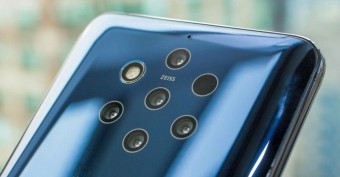Should I buy a used smartphone?
We independently test the products and technologies that we recommend.

So why not? The fact is that in the case of smartphones, the risk is much greater than when buying a conditional graphics card, an electric drill or a bicycle. But being supporters of a rational approach, first we will weigh on paper all the pros and cons of buying a smartphone with our hands, and then we will give advice on how to approach the purchase correctly.
Arguments in favor of buying a used smartphone
 |
Favorable price
A favorable price is the most banal reason. The seller could win a smartphone in some kind of promotion. They could have given it to him. The smartphone bored him corny. Or he doesn't like something about the purchased model (he wanted a FullHD+ screen, a "weak" camera, etc.) and the person wants to buy a new one. Such situations happen more often than you might think, so there are quite a lot of adequate ads on the used market in which people sell brand new or barely used smartphones with a box and a valid warranty for 20-30% cheaper than in stores.
You need a smartphone purely to make calls
Yes, the world is still full of people who need a smartphone primarily for calls, and not for maintaining an Instagram account or playing PUBG in pairs. If you are in this category and you, in general, do not care about the screen class or the number of processor cores, then the used market can be a great solution. The main thing is not to take a completely outdated model, which will slow down even when opening the phone book.
This is the iPhone of the previous generation, which is being discounted on the cheap for the sake of a new model
There are a variety of people among Apple fans. Some of them have been walking with an old {for a year!!! block='price' idgood='311531' !!!} and finally decided to upgrade. Others are standing in queues under the store to show off to friends a brand new iPhone on the first day of sales. During this period, a bunch of models of the previous generation appear on the used market. And this is great, because among the many similar ads, quite profitable offers often come across. The main thing is not to be led to too cheap prices and not to buy a fake or non-working iPhone with a soldered battery from an old Nokia (it happens, yes). But we'll talk about the risks later. In the meantime, let's analyze the disadvantages of buying a smartphone with your hands.
Arguments against buying a used smartphone
 |
Smartphones are developing by leaps and bounds
This carousel is spinning so fast that even the smartphone manufacturers themselves can't keep up (ask HTC or Sony). What can we say about the average person who does not spend an hour or two a day reading IT sites with reviews of technology. Judge for yourself, a year and a half ago, an average smartphone had 2 GB of RAM behind its eyes, and 4 GB was installed in flagships. At the end of 2019, 2 GB is the lower threshold, 3 GB is OK, and in mid—level smartphones like Xiaomi Mi 9T 64 GB / 6 GB they put 6 – 8 GB each with an eye to the future.
The same goes for the design, some year ago models with a thin frame and a cutout for the front camera were considered the height of fashion, now these attributes are inherent even to the simplest "state employee" for $ 100. Smartphones are really getting better in every way and buying a model from last year you can deprive yourself of many charms, like a triple camera, modern hardware, a capacious battery with fast charging, a fingerprint scanner mounted in the screen or a frameless display.
System Updates
Both iOS and Android are updated annually. Updates like Santa bring feelings of joy, celebration and novelty. Firstly, they are needed to add some new features like a dark theme in Android Q or a file manager in iOS 13 (read more at the links — what's new in iOS13 and what's new in Android Q). Secondly, new OS patches close vulnerabilities found in the system. Instagram Facebook messenger and third, popular apps like Facebook messenger or Instagram simply won't start on very old OS versions.
Android smartphones are updated somewhat chaotically, since each manufacturer has its own shell, which requires additional configuration. Usually flagships are updated first, then cheaper tubes. And the average support period is 3 years. Apple has a support cycle of about five years, and all devices receive iOS updates at the same time, not selective models.
 |
The lifetime of the smartphone
Smartphones are not RAM or a central processor that can work for years without a hitch. As the statistics of warranty services show, the average life of a smartphone is from two to four years, depending on its class, conditions of use and to some extent luck. Usually, cheap models fail faster or simply fail to cope with new tasks. More expensive models use higher-quality materials and are less likely to fail. But this is not an axiom.
No official warranty
Most models have a warranty period of less than a year. Further, if his screen burns out, the sensor breaks, the memory module becomes unusable or some other attack happens, you will have to repair the tube at your own expense. At the same time, the cost of repair does not depend on the current price of the smartphone, so replacing the screen can cost almost the same amount that you paid for the handset itself. Although, it is worth noting that the availability of a warranty card does not save from all misfortunes.
Risk of being deceived
If fraud were an official profession, then it could claim the laurels of the first profession in the world. As Nike Borzov sang, "it was, is and will be," and there can be a great many schemes of deception. Usually, scammers are more attracted to expensive models that promise good benefits. Very few people will want to tinker with tubes for $ 100. Most of all, cheaters love the iPhone of the latest generations, but even flagships on Android are not in such demand.
How to buy a used smartphone and not be disappointed
 |
Finally, a few tips on choosing. First, decide what you need so as not to waste time in vain. Then we go to the trading platforms and look at the necessary ads.
When viewing ads, pay attention to the photos. You see the carbon-copy ads in the spirit of advertising irons from the 30s — pass by. You will see ads with stock photos, also pass by. There is a great chance that this is a divorce and the author of the ad does not have this smartphone. Give preference to ads that describe the reason for the sale and the service life, and the author can answer about the warranty period, the availability of the original box or a receipt for the purchase. A box, a warranty card or a purchase receipt will guarantee that the smartphone is not stolen and is not wanted.
Before buying a smartphone, you should check it personally. Namely, the state of operation of the screen (response to touch, "broken" pixels, colour rendering and viewing angles), the response and operation of all physical and touch buttons on the device, the operation of the camera, speaker (conversational and multimedia), all communication modems, power outlets and headphones, the correct operation of the SIM tray and microphones. It is advisable to look under the cover to check the battery and the moisture indicator (helps to find out if the smartphone was drowned in water). In the case of Apple devices, it is worth punching the serial number of the device on the official website of the company. Well, be sure to check the battery — in 10 minutes of checking, the smartphone should not lose more than 10% of the charge. Although, 10% is too much. If he eats the battery, even when turned off, he is definitely not a tenant.
One More Thing
And only after all the tests can you finally decide whether to take this device.
We would also recommend looking at our selections of the best smartphones and comparing your favorite used models with what is on the market in official stores.
Firstly, you can run into a restored smartphone at a tasty price. Unlike the hand model, it has not been used by anyone, and it has a warranty.
Secondly, there is a chance to get discounts. It can be a holiday sale, some kind of situational action like Black Friday, or a systematic price reduction that manufacturers practice when releasing new models. For example, the excellent in all respects OnePlus 7 (256 GB + 8 GB of RAM) recently cost like a regular flagship, and now it is confidently rushing to the $400 mark. In this case, it would be strange to buy a conditional Google Pixel 3 64 GB for the same money.
Articles, reviews, useful tips
All materials





















































